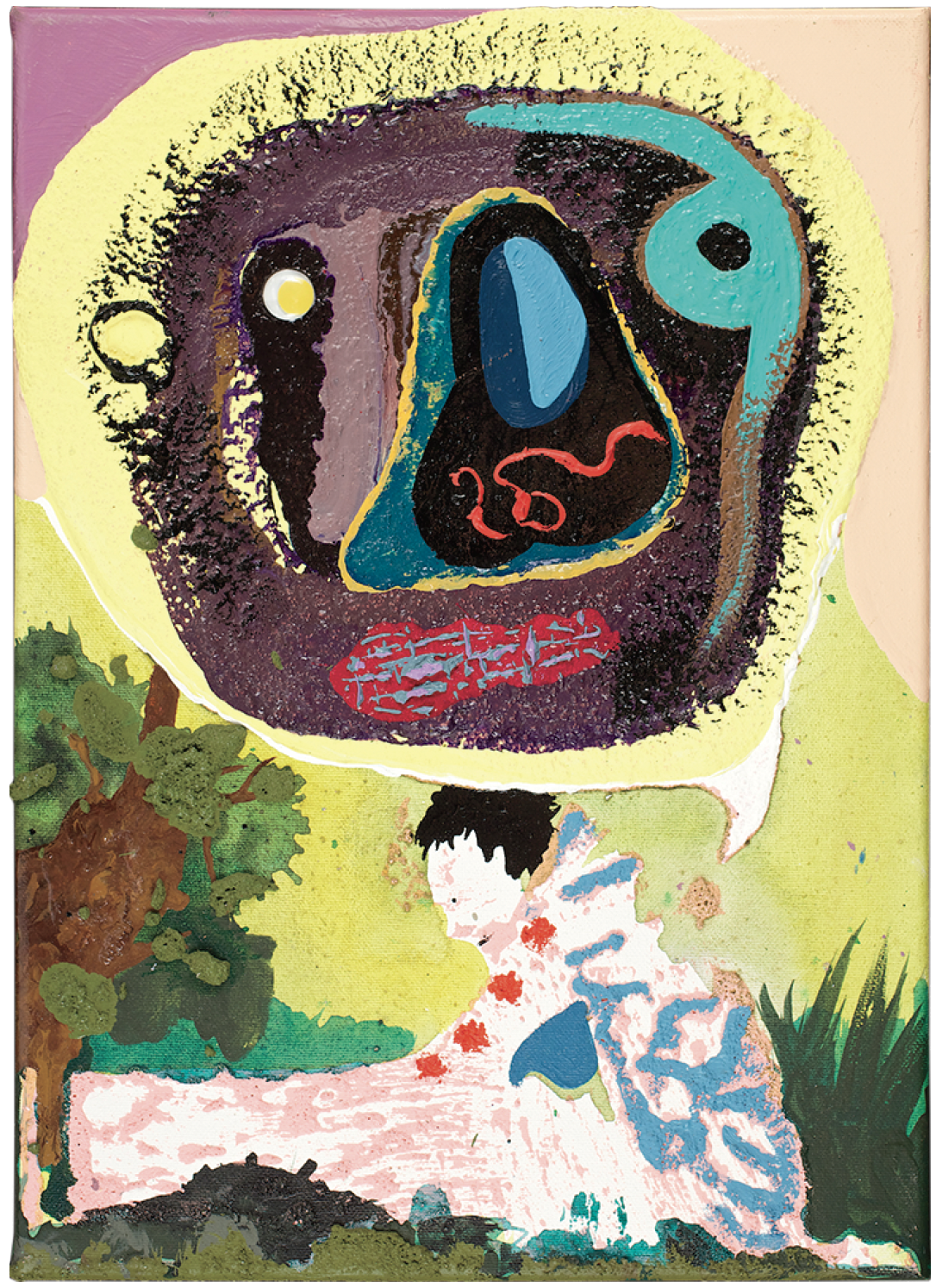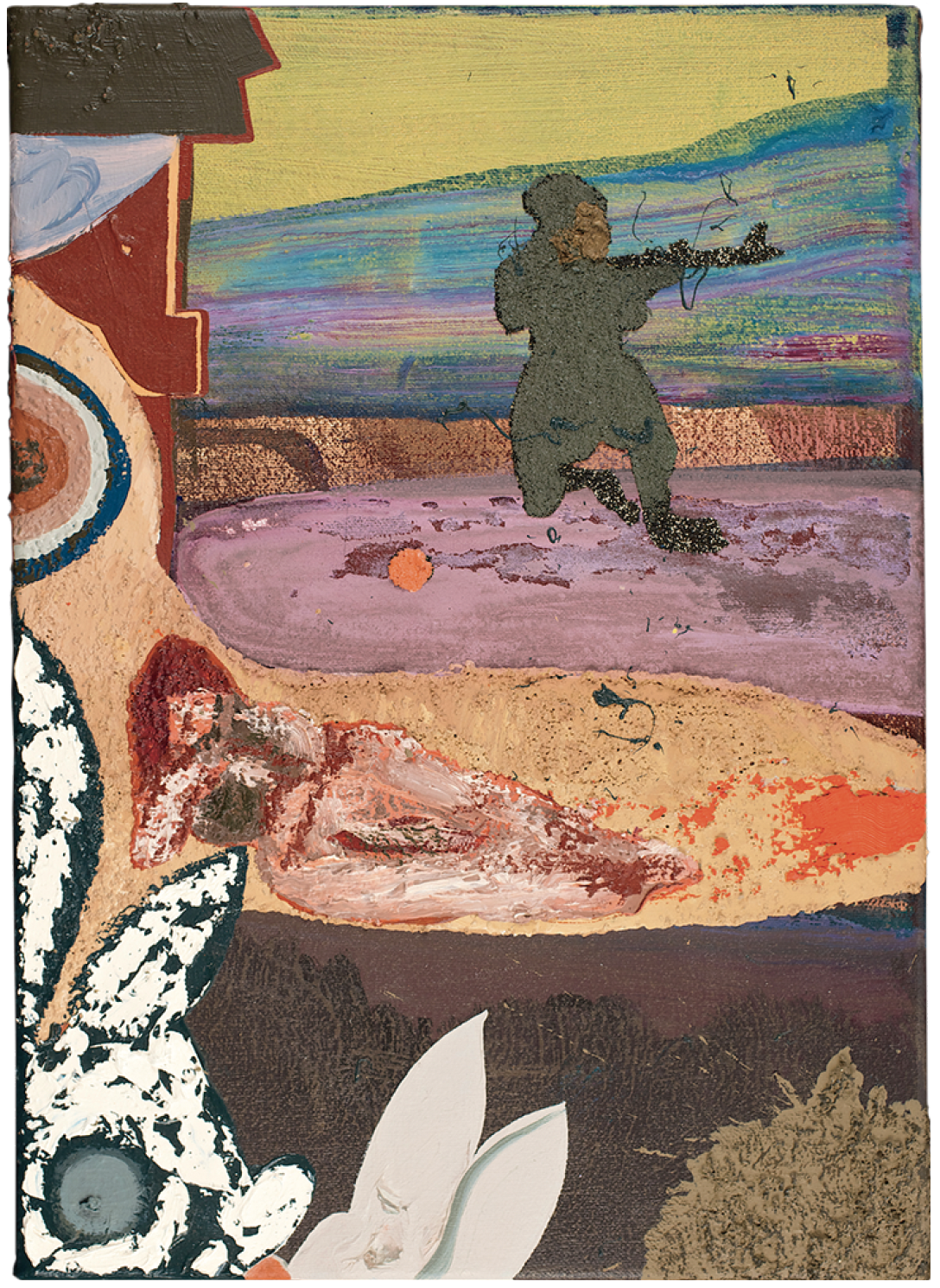Craig Love
The Romantic poet William Wordsworth’s 1804 ode “To the Cuckoo” is not so much about an animal as it is a lament for the way we parse the world. Faced with the dilemma of whether to “call thee Bird, / Or but a wandering Voice,” the narrator implies that something beautiful is lost when our minds inevitably rush to subsume a local and particular sense perception under a general concept. The title of Craig Stuart Love’s recent one-man show at Library Gallery in Winnipeg is germane given the artist’s quixotic efforts to capture the wandering and disembodied quality of thought in word and paint.
Love’s affections are reserved for those poets and artists who strive in broad and various ways to create linguistic or visual analogs to their emotional and cognitive experiences; among painters Frank Auerbach, Joan Mitchell and Harold Klunder loom large. Love is not a conceptual artist and the upshot to his interest in thought is not a pursuit of dematerialization. Indeed, there is exactly this tension that he wants to make manifest—something that is, by definition, fleeting and intangible: memory and the imagination. Wordsworth’s babbling cuckoo captures a little of the disembodied messiness of mental life, which is at once indubitable. We can’t doubt our experience of it and, radically unstable, we can get lost in it, can “go cuckoo.” Importantly, Love comes by his interest in memory, imagination and the instability therein, honestly. He created his first body of mature work around 2000, in response to his grandfather’s mental decline from Alzheimer’s disease. Love, who entered the world of the visual arts after studying English literature, directed his then novice technical facility toward creating images that elide the slippery and unwieldy nature of oil paint with his mental slippages.

Craig Love, The clown that Mitch built, 2015, oil, acrylic, sand and googly-eye on stretched canvas, 14 x 10 inches. Photograph William Eakin. Courtesy the artist and Library Gallery, Winnipeg.
“O CUCKOO” consisted of 80 variously and modestly sized paintings mounted on two mirroring walls in Library’s narrowish space. On one side of the room, roughly half of the canvases leaned like magazines at irregular intervals along a pair of stacked ledges. The works on the opposing wall were arranged in a loose and apparently random grid. Although the exhibition’s curator, artist Wanda Koop, neglected to include examples of Love’s monumental word-wall canvases (owing at least in part to spatial constraints), her selection nonetheless provided a fulsome indication of the artist’s recurring motifs, techniques and materials: swollen, googly-eyed faces, abrupt shifts in texture and colour, seemingly abstract passages that suddenly coalesce into recognizable but bizarrely contorted figures. Nam de Plumb is a beach scene with a commando and an odalisque. In The Clown that Mitch Built, a speech bubble trades language for the image of a grotesque microbe. Wandering and Waiting features a fingerless, globular hand clutching a pistol.
Works like these, containing a quotient of distinctly representational content, were the minority; and even then, they seemed informale, ready to curdle back into a hot indistinguishable mess at any moment. Nonetheless, it would be a cop-out to construe these as fundamentally different in kind from the exhibition’s remaining bulk of “non-objective” canvases. Like cloud formations or stains on concrete, Love’s work is a continuum of substance within which we may, at different points and to varying degrees, discern pictorial elements. This insight follows directly from the artist’s perverse quest to make the continuum of memory and imagination manifest through painting.
Try to draw something imagined or from memory. You’ll quickly discover that a mental image of an object, however photographically precise, however familiar or rehearsed, proves massively insufficient for recording a satisfying likeness, especially when compared with results obtained studying the same object from life. If perceptual experience of the world furnishes our minds with an unending train of impressions, our imaginative experience is a crazy train: a cargo of blurry impressions subject to our whims on some occasions, and utterly ungovernable on others. Love’s paintings are accretions of so many imaginative derailments. Just as one thought is invariably absorbed by the next, a decorative motif can suddenly transform into eyes, lips, nipples (Twisted Dough); a painting, the layered deposit of mental proliferation.

Craig Love, Nam de Plumb, 2015, oil, acrylic, charcoal and sand on stretched canvas, 14 x 10 inches. Photograph William Eakin. Courtesy the artist and Library Gallery, Winnipeg.
Language is another prominent feature of Love’s self-described “poetic gut/brain.” Text paintings contain phrases (“an agony of pupating saints”), puns (“Mais Oui, Non Ennui”) and anagrams (“Amletha” [a Hamlet]) that romp across the canvas like an alphabet soup of unresolved thought. Such works recall the grammatical entropy that ensues from attempting to read in a dream. Letters suddenly vanish or appear; sentences jumble; the cookbook you took off the shelf is suddenly revealed to contain the poetry of Alfred Jarry. Love approximates the dream’s word-made-strange effect for our wakeful consciousness.
“O CUCKOO” surveyed the smart, multifaceted and utterly absorbing practice of an artist who exhibits far too infrequently. In the end, Love’s paintings are captivating because they rescue subjective memory and imagination from artistic cliché. Love does not rehash a romantic pursuit of liberation through solipsistic inwardness or heroic self-expression. For him, a painting—and art generally—is not a window into the creator’s mind; nor does it offer even a remote and tawdry translation of the imagination. Paint committed to canvas is but a self-sabotaging obstruction to a kind of real experience of the imagination’s fleeting, capricious and immediate quality. Paint is the concept that prevents us from hearing the cuckoo as a wandering voice; but, as such, it is also the thing that intimates the beauty beyond the concept. ❚
“O CUCKOO” was exhibited at Library Gallery, Winnipeg, from September 4 to October 31, 2015.
Andrew Kear is the Curator of Historical Canadian Art at the Winnipeg Art Gallery

